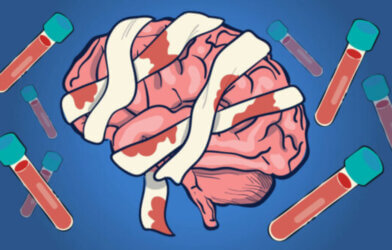Napping too much in the day as you get older could be a worrying warning sign of dementia, according to a new study. Researchers have found a “vicious cycle” between excessive daytime napping among the elderly, Alzheimer’s and dementia.
Doctors from Brigham and Women’s Hospital say old people’s sleeping patterns are not well understood by experts and the link between naps and both diseases had previously been unknown. A notable increase in the amount of naps someone takes could be a sign their memory problems are deteriorating quickly, they warn.
The findings call for more attention to be paid to daytime sleeping patterns so the links can be better understood, the researchers add. Previous studies on links between naps and dementia have had mixed results, with some even saying a nap slows down the brain’s deterioration. However, doctors say these studies were not accurate because they were based on questionnaires and assessed napping with a participant only once.
“Daytime sleep behaviors of older adults are oftentimes ignored, and a consensus for daytime napping in clinical practice and health care is still lacking,” says first author Peng Li, of the Medical Biodynamics Program in the Brigham’s Division of Sleep and Circadian Disorders, in a statement. “Our results not only suggest that excessive daytime napping may signal an elevated risk of Alzheimer’s dementia, but they also show that faster yearly increase in daytime napping may be a sign of deteriorating or unfavored clinical progression of the disease.”
Connecting napping length, frequency to dementia rates
For the new study, the scientists looked at data from 1,401 people with an average age of 81. Around three quarters of participants were women and participants were followed up for up to 14 years. They were given a watch-like device which they wore on their non-dominant wrist for two weeks every year. Each year they undertook a range of tests to assess their cognitive skills.
The team identified sleep episodes using a sleep-scoring algorithm that considers wrist activity counts. It calculated the length of each nap and the frequency of snoozes. Any long period of non-activity between 9 a.m. and 7 p.m. was counted as a nap.
When the study began, 75.7 percent of participants had no cognitive impairment, while 19.5 percent of them had mild cognitive impairment. Just 4.1 per cent had Alzheimer’s disease. For participants who did not develop cognitive impairment, daily daytime napping increased by an average 11 minutes per year.
The rate of increase doubled after a diagnosis of mild cognitive impairment to 24 minutes and nearly tripled to 68 minutes after a diagnosis of Alzheimer’s disease.
When the team looked at the 24 percent of participants who had normal cognition at the start of the study, but developed Alzheimer’s six years later and compared them with those whose cognition remained stable, they found differences in napping habits. Participants who napped for more than an hour a day had a 40 percent higher risk of developing Alzheimer’s than those who napped less than an hour a day.
In addition, participants who napped at least once a day had a 40 percent higher risk of developing Alzheimer’s than those who napped less than once a day. The length and frequency of naps grew as the diseases progressed, particularly after a diagnosis.
‘Vicious cycle’
The findings build on work by one of the study’s authors which found older men who napped two hours a day were more likely to develop cognitive impairment that those who napped less than 30 minutes a day. This study adds to these findings by evaluating both daytime napping and cognition once a year.
The findings held up independently of known risk factors for Alzheimer’s and dementia such as age and the length and frequency of sleeps. The researchers believe the fact people with Alzheimer’s have fewer neurons in their brain telling them to stay awake may explain the results.
“Our study calls for a closer attention to 24-hour sleep patterns, not only nighttime sleep but also daytime sleep, for health monitoring in older adults,” Li says. “The vicious cycle we observed between daytime sleep and Alzheimer’s disease offers a basis for better understanding the role of sleep in the development and progression of Alzheimer’s disease in older adults.”
Adds senior co-author Dr. Yue Leng, in a statement per South West News Service: “The study shows for the first time that napping and Alzheimer’s disease seem to be driving each other’s changes in a bi-directional way. I don’t think we have enough evidence to draw conclusions about a causal relationship, that it’s the napping itself that caused cognitive aging, but excessive daytime napping might be a signal of accelerated aging or cognitive aging process.”
Leng says that further research should examine if interventions to curb napping in older individuals would consequently delay cognitive decline or development of dementia.
The study was a collaboration between Brigham and Women’s Hospital in Boston, the Rush Alzheimer’s Disease Centre in Chicago and the University of California, San Francisco.
The findings are published in Alzheimer’s and Dementia: The Journal of the Alzheimer’s Association.
Article by South West News Service writer Gwyn Wright












